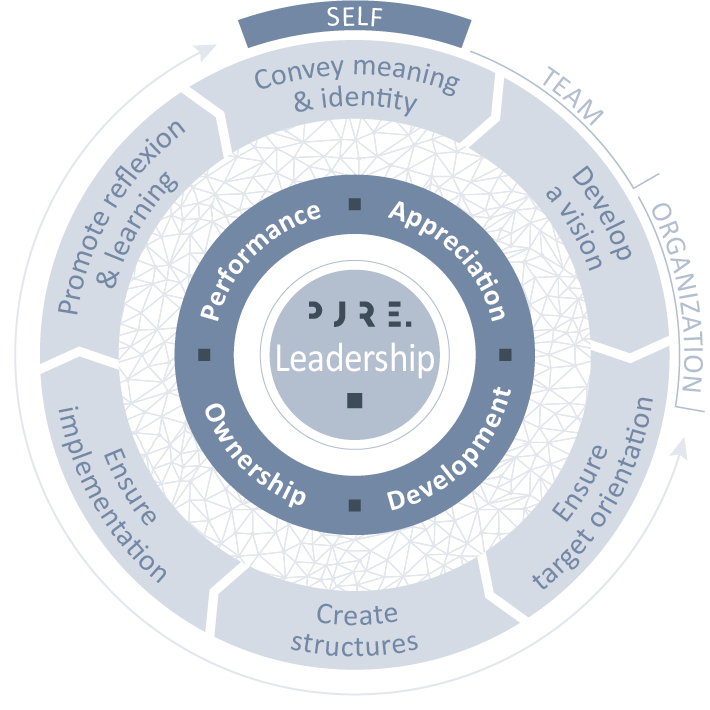1
Understanding of Leadership
Leadership has always been an expression of how social and organizational problems have been understood and solved. Today, the enormous changes in the global and regional environment are leaving clear traces. Conventional approaches no longer work, the limits of what can be done and influenced have long been reached. Problems often remain unrecognized, causes and correlations are no longer really understood.
The understanding and practice of leadership must be rethought. The core function of leadership today lies in mastering complexity.
Accordingly, the core question of leadership is:
How is it possible to organize complex, social and productive systems in such a way that they organize themselves, stabilize themselves - at the same time, but also remain adaptable?
2
Leadership Model
The PURE leadership model represents the essential building blocks and interrelationships in leading and managing complex systems.
It consists of 4 core values of successful leadership, 6 tasks of leadership and - as a connecting element - leadership communication.
The model contains methodological tools, practical knowledge and the latest findings from systems and social sciences on the subject of “positive leadership”. It sheds light on strategic, structural and cultural issues of the organization - and: It is a competence grid for professional management!

Click for detailed view
4 core values:
Values determine what is important to the individual, a group and the organization. No matter how they are expressed, values are a benchmark for individual action. At the same time, they are important building blocks of a corporate culture when lived collectively. They essentially determine the “character” of the organization. The 4 core values of the PURE leadership model are appreciation, responsibility, development and performance.
6 tasks:
Task areas cluster the formative, controlling and developmental tasks of managers according to closed-loop thinking. They define what needs to be done to keep an organization and its “viability”: Communicating meaning and identity, developing a vision for the future, anchoring goal orientation, creating structures, ensuring implementation and promoting reflection & learning.
Communication:
Leadership only achieves its effect through professional communication: as a manager, you are constantly required to convey messages precisely, inspire others and provide guidance in difficult situations. Professional communication creates trust, promotes cooperation and motivates teams to perform at their best.
3
Training Approach
From top line to base line management - we train managers in key leadership topics. The formats range from comprehensive curricula to one-day workshops and short leadership impulses on current topics.
